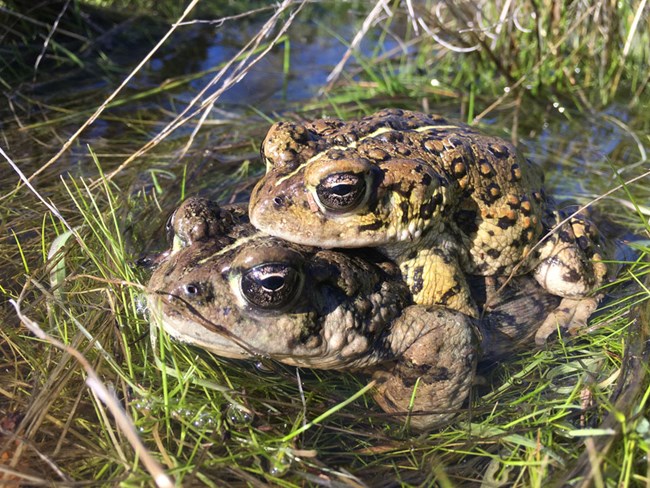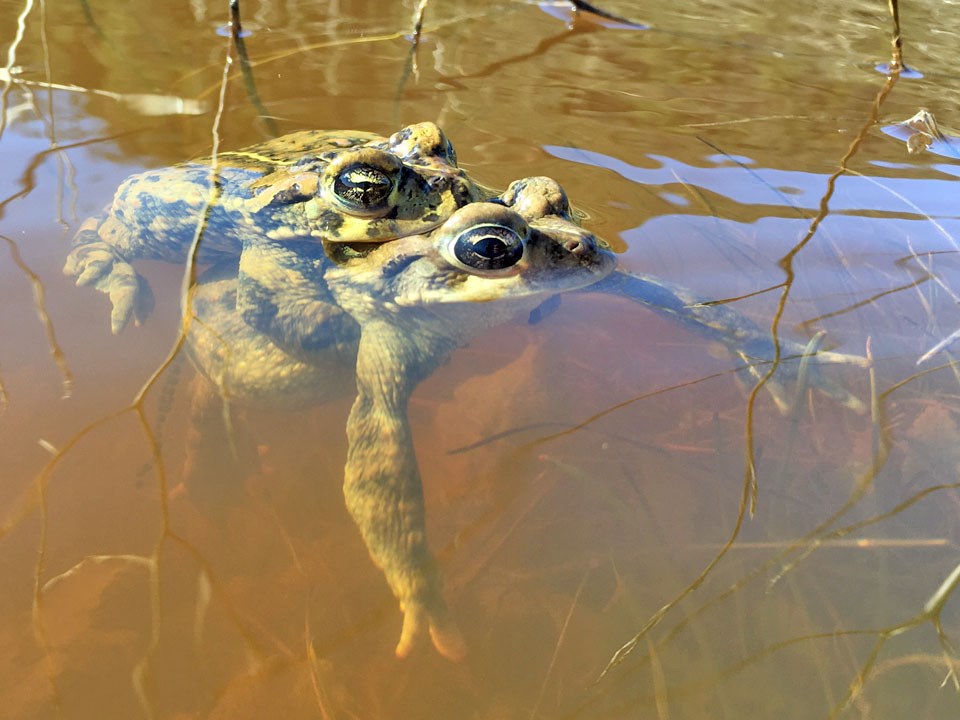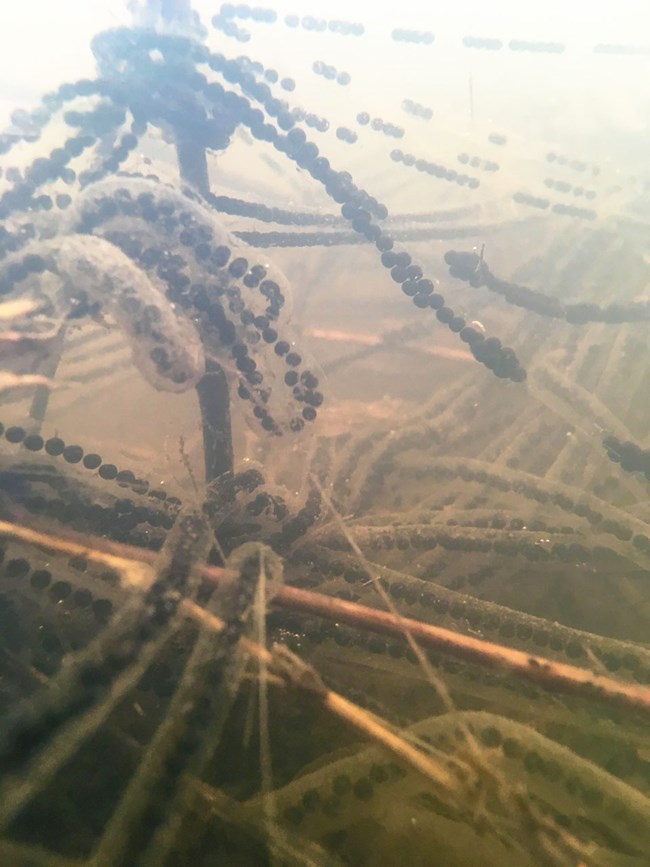Last updated: March 21, 2017
Article
A Need to Breed: California Toads in the Santa Monica Mountains

NPS
March 15, 2017 - What is a toad to do if it needs to breed but can’t find a pond? California toads (Anaxyrus boreas halophilus) in Santa Monica Mountains National Recreation Area recently faced this dilemma. They typically breed every spring, finding ponds or pools by scent after hunting insects on land for most of the year. As the recent drought wore on, such pools became scarce. Without sources of still water, toad pairs cannot deposit and fertilize their eggs.
For the last three years, the Mediterranean Coast Inventory & Monitoring Network's aquatic amphibian monitoring team found only one or two places with evidence of breeding toads. Most toads, though, had little choice but to postpone breeding. If what followed is any indication, their determination to reproduce only grew more urgent.

NPS
In September 2016, well ahead of the normal rainy season, a rainstorm drenched the Santa Monica Mountains. As wildlife ecologist Katy Delaney drove through the park two months later, she noticed a former cattle pond that had filled during the storm. Curious, she stopped to take a closer look. The edges of the pond were teeming with dark, wriggling tadpoles nearing the end of their metamorphosis!
California toad tadpoles had never been documented in the fall, so Katy took pictures, not immediately sure what species she had found. In fact, she was able to confirm that they were California toad tadpoles. Their parents had seized a risky, off-season opportunity to reproduce. A note about this previously unheard of occurrence has been accepted for publication in the Bulletin of the Southern California Academy of Sciences.

NPS
It remains a mystery whether the vulnerable toadlets survived the cold winter months after leaving their pond. The winter did finally bring more rain, however. Storm after storm left ponds and pools brimming with water for the first time in years. Mature toads, still desperate to reproduce, wasted no time mating. Pools were soon filled with their long, gelatinous strings of eggs. The monitoring team has also already glimpsed the first of a new generation of toad tadpoles!
Official 2017 aquatic amphibian surveys will begin in late March and continue through early July. Monitoring takes place along streams throughout the park. Other native species surveyed include California newts, Pacific treefrogs, and California treefrogs. Newly reintroduced California red-legged frogs are also being monitored at some locations.
Prepared by the Mediterranean Coast Inventory and Monitoring Network.
